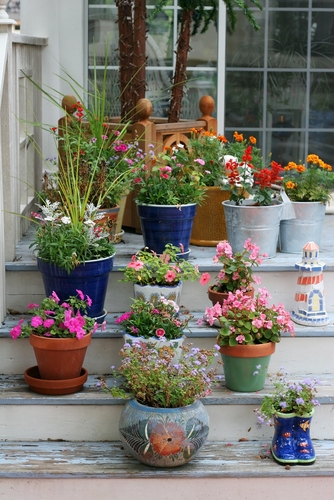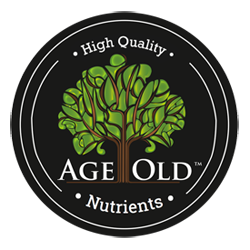Container Gardening
Container Gardening is the act of growing flowers/vegetables in containers or pots instead of in the ground. This can be an effective course to take for those who do not have the required land, with adequate sunshine, or for those with soil that is problematic in any way. Areas such as patios, decks and balconies can supply us with enough space to grow a wide variety of plants in a multitude of containers. Container gardening is a great way for anyone living in an apartment/condominium to grow beautiful flowers and delicious vegetables right at home and can be an ideal growing outlet for people that have limited mobility such as the elderly or disabled. Container gardens can be designed to be highly accessible and easy to maintain.
When planning a container garden, start by deciding which type of plants you would like grow. Plants ranging from ornamentals to edible plants like vegetables and herbs can usually be adapted to the container gardening style.
Growing containers or pots come in several different sizes and materials, including plastic, ceramic and cloth. The size of the container used should directly reflect the choice of plant being grown. For smaller flowers/vegetables (lettuce, herbs, strawberries) a gallon size container should work well. For larger flowers/vegetables (tomatoes, eggplants, peppers) we recommend using a 5 gallon container or larger. The smaller the volume of the container the faster the medium will dry out and the more frequent the need for watering will be. Larger containers also allow for more space to accommodate expansive root growth which can result in bigger, healthier plants. Regardless of container size, it is important that it has enough holes in the bottom to allow proper drainage. If the container has poor drainage you may want to use a drill to make more holes.

When deciding which growing medium to use make sure to keep in mind how often you will be able to water. It is best to use a light soilless mix because regular soil is too heavy to use in container gardening and will not drain properly. A medium with high amounts of perlite or pea gravel will allow the water to drain quickly through the root zone. Good drainage is important, however the faster the water drains from the medium the faster the medium is likely to dry out requiring the need to water maybe 2 or even 3 times a day. A medium with water retaining components like coco-coir or peat moss will dry out less quickly and likely require a watering once a day. Placing a container garden close to a faucet or rain barrel will minimize the amount of water to be lugged around. Container gardens can even be modified to accommodate the drip line irrigation method, making daily watering less of a chore.
For maximum growth, plants growing in a container garden should be fertilized at least every 2-3 weeks and applications should be made in accordance to an individual plants nutrient requirement. Organic fertilizers as well as synthetic/inorganic fertilizers can both be used in container gardening or even a mix of both if the grower desires. When using any fertilizer, be sure to apply according to the directions and to not over fertilize. Soilless growing mediums do not contain the same buffers as soil so over fertilizing can easily lead to fertilizer burn and even plant death.
One of the beautiful aspects of container gardening is mobility. Issues with shade and sun availability can easily be avoided by simply moving the container to wherever the sun/shade may be. Many larger size containers even come with handles, making container placement less of a struggle.


